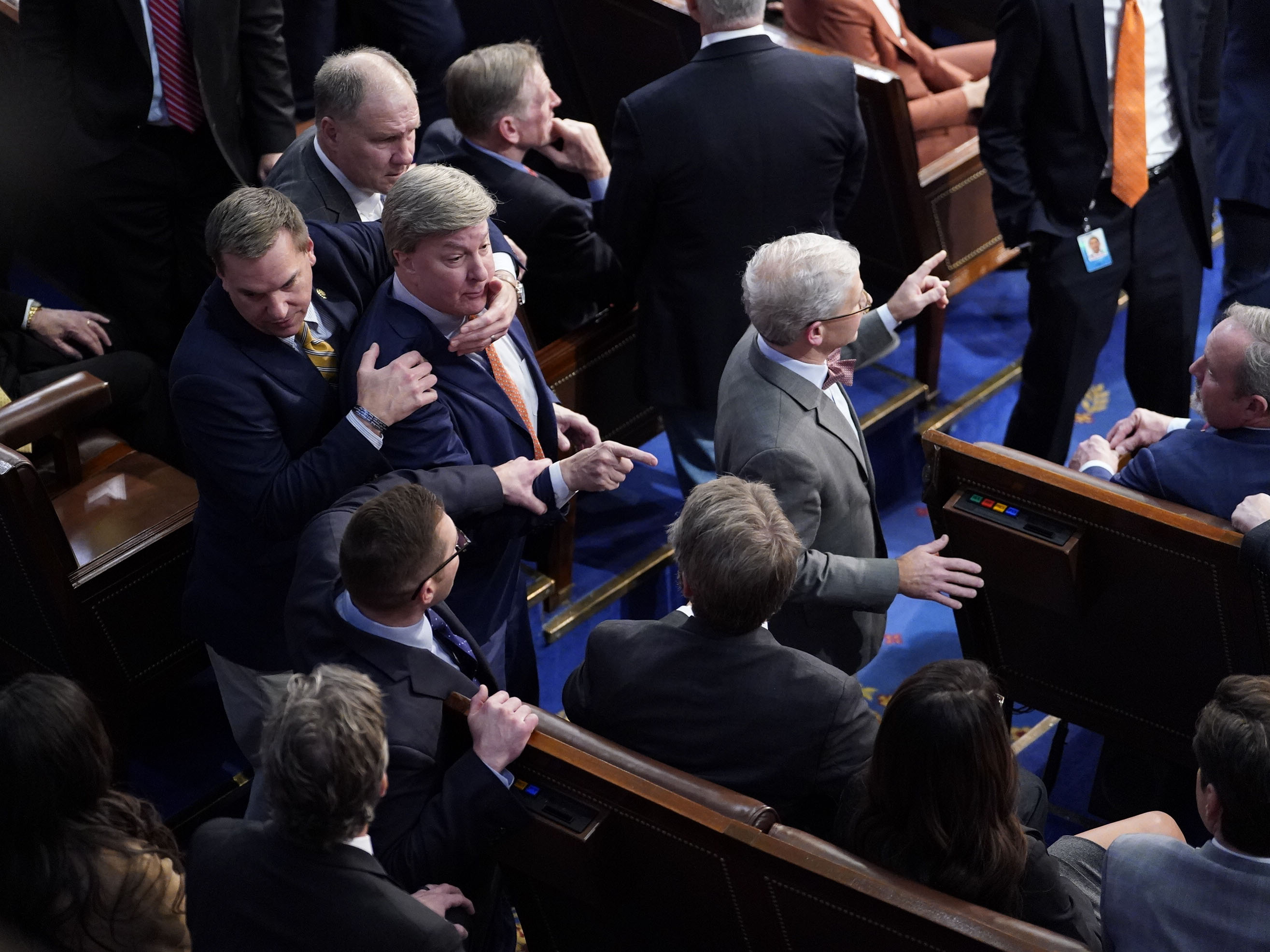
WASHINGTON—The head of C-SPAN’s camera crew broadcasting the marathon contest for House Speaker two weeks ago said he was “gutted” when he realized he had missed the altercation between Rep, Mike Rogers (R-LA) and Matt Gaetz (R-FL) between the 14th and final 15th vote to confirm Rep. Kevin McCarthy (R-CA) for Speaker of the House of Representatives.
Speaking on WTOP radio’s DMV Download podcast, C-SPAN Crew Chief Steve Kehoe told host Luke Garret about the decisions leading up to the now infamous incident that overshadowed the most important news of the evening—the election of Speaker McCarthy at the end of a turbulent week that riveted American (and worldwide) viewers.
After McCarthy lost the 14th vote the evening of Jan. 6, he left his seat on the House floor to approach Rep. Gaetz. After approximately 30-45 seconds of discussion, Rep. Rogers was seen approaching Gaetz in what appeared to be an attempt to get physical with Gaetz but was restrained by a fellow lawmaker before it broke out into actual violence.
While the camera did catch the start of the incident, it quickly followed McCarthy as he returned to his seat.
“The discussion we had had amongst the operators was 'OK, I'm gonna stick with McCarthy,'” Kehoe said. “So when he broke to go away, I heard everybody gasp, saying ‘Oh, did you see that?’ And while I saw a bunch of people coming down the aisle. I didn't know if I caught it.”
After McCarthy was finally elected on the 15th vote, there was a lull on the House floor as preparations were being made to formally introduce McCarthy as the new Speaker. It was then that Kehoe realized what he had done.
“I was gutted,” he said. “I was sitting there thinking ‘all anyone is going to talk about is the dust up and it would have been on my camera and I missed it.’ I didn't know until I saw it replayed right after, if it was going to be there or not.
The professional video industry's #1 source for news, trends and product and tech information. Sign up below.
“And it was eating me alive. They're sitting there thinking everyone's gonna say ‘I did it on purpose, because we didn't want it.’ It was gut wrenching.”
Kehoe discussed how that the drama that took place on the House floor evolved over time and why the network chose to focus on McCarthy’s opponents.
“Every day, it changed… every vote, the story seemed to change,” Kehoe said. “So by the end, we had just decided amongst the production team—and this is a testament to [C-SPAN Director of Editorial Operations] Ben O’Connell giving us the freedom to make these calls—OK, we're going to make a point of showing everyone who at some point during the week, voted against McCarthy.”
As the official broadcaster of House proceedings, C-SPAN has a reputation (that it eagerly embraces) as a provider of boring content that is only of interest to inside the beltway political pundits (as well as a long-running live viewer call-in show that has become a cult favorite). And that’s mainly due to rules that are determined at the beginning of every Congress. Since its launch in 1979, when Tip O’Neill restricted camera coverage to just Representatives addressing the House and wide pans of the room. Speakers, for the most part, have kept those restrictions in place.
But by getting permission to expand its camera coverage of the House Speaker race (which the news networks simulcast), the idea of bringing more up close and personal coverage of the House has initiated new requests to make that type of coverage a daily occurrence. Whether that will happen is anyone’s guess; however support is growing—Rep. Gaetz himself recently proposed such legislation. Nevertheless, Kehoe described his feelings about being a part of history.
"Representative government in action is one of the most compelling things you can imagine,” he said. “[Regarding expanding camera coverage] if there were more people in the chamber where there were more meetings amongst themselves, it might happen a little bit more.
“But that's what was so amazing—you could see everyone there. And as the totals just changed a little bit here, we were getting a little bit closer. And then it's easy to come together. And that is what is compelling. There were no overt deals or anything like that. It was watching it grow in the moment that made it really interesting.”
You can listen to the DMV Download here.
Tom has covered the broadcast technology market for the past 25 years, including three years handling member communications for the National Association of Broadcasters followed by a year as editor of Video Technology News and DTV Business executive newsletters for Phillips Publishing. In 1999 he launched digitalbroadcasting.com for internet B2B portal Verticalnet. He is also a charter member of the CTA's Academy of Digital TV Pioneers. Since 2001, he has been editor-in-chief of TV Tech (www.tvtech.com), the leading source of news and information on broadcast and related media technology and is a frequent contributor and moderator to the brand’s Tech Leadership events.

